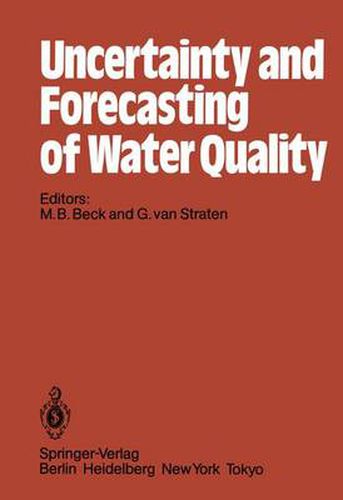Readings Newsletter
Become a Readings Member to make your shopping experience even easier.
Sign in or sign up for free!
You’re not far away from qualifying for FREE standard shipping within Australia
You’ve qualified for FREE standard shipping within Australia
The cart is loading…






This title is printed to order. This book may have been self-published. If so, we cannot guarantee the quality of the content. In the main most books will have gone through the editing process however some may not. We therefore suggest that you be aware of this before ordering this book. If in doubt check either the author or publisher’s details as we are unable to accept any returns unless they are faulty. Please contact us if you have any questions.
Since the International Institute for Applied Systems Analysis began its study of water quality modeling and management in 1977, it has been interested in the relations between uncertainty and the problems of model calibration and prediction. The work has focused on the theme of modeling poorly defined environmental systems, a principal topic of the effort devoted to environmental quality control and management. Accounting for the effects of uncertainty was also of central concern to our two case studies of lake eutrophication management, one dealing with Lake Balaton in Hungary and the other with several Austrian lake systems. Thus, in November 1979 we held a meeting at Laxenburg to discuss recent method ological developments in addressing problems associated with uncertainty and forecasting of water quality. This book is based on the proceedings of that meeting. The last few years have seen an increase in awareness of the issue of uncertainty in water quality and ecological modeling. This book is relevant not only to contemporary issues but also to those of the future. A lack of field data will not always be the dominant problem for water quality modeling and management; more sophisticated measuring techniques and more comprehensive monitoring networks will come to be more widely applied. Rather, the important problems of the future are much more likely to emerge from the enhanced facility of data processing and to concern the meaningful interpretation, assimilation., and use of the information thus obtained.
$9.00 standard shipping within Australia
FREE standard shipping within Australia for orders over $100.00
Express & International shipping calculated at checkout
This title is printed to order. This book may have been self-published. If so, we cannot guarantee the quality of the content. In the main most books will have gone through the editing process however some may not. We therefore suggest that you be aware of this before ordering this book. If in doubt check either the author or publisher’s details as we are unable to accept any returns unless they are faulty. Please contact us if you have any questions.
Since the International Institute for Applied Systems Analysis began its study of water quality modeling and management in 1977, it has been interested in the relations between uncertainty and the problems of model calibration and prediction. The work has focused on the theme of modeling poorly defined environmental systems, a principal topic of the effort devoted to environmental quality control and management. Accounting for the effects of uncertainty was also of central concern to our two case studies of lake eutrophication management, one dealing with Lake Balaton in Hungary and the other with several Austrian lake systems. Thus, in November 1979 we held a meeting at Laxenburg to discuss recent method ological developments in addressing problems associated with uncertainty and forecasting of water quality. This book is based on the proceedings of that meeting. The last few years have seen an increase in awareness of the issue of uncertainty in water quality and ecological modeling. This book is relevant not only to contemporary issues but also to those of the future. A lack of field data will not always be the dominant problem for water quality modeling and management; more sophisticated measuring techniques and more comprehensive monitoring networks will come to be more widely applied. Rather, the important problems of the future are much more likely to emerge from the enhanced facility of data processing and to concern the meaningful interpretation, assimilation., and use of the information thus obtained.